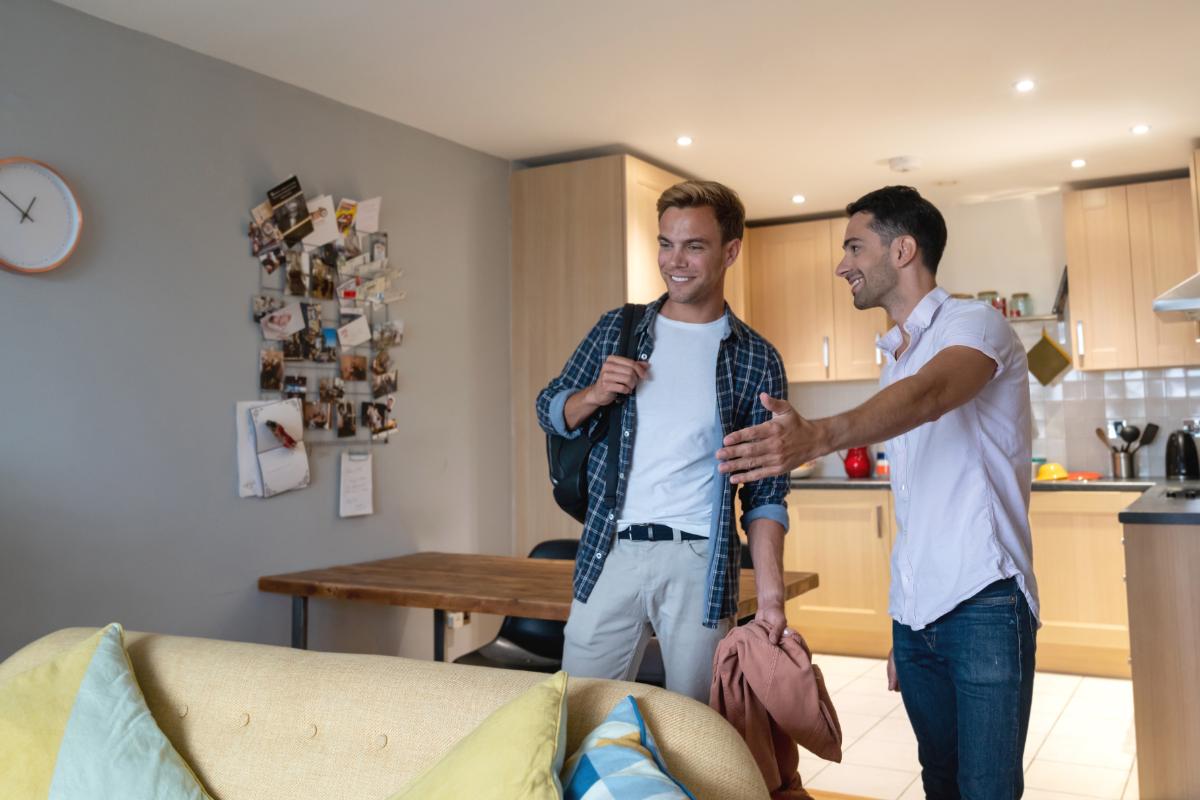
There are pros and cons to investing in student property. If you're considering taking the plunge, we'll outline the benefits and drawbacks on this page.

Students may only be at university from September to July, but being a landlord of student properties is an all-year-round occupation. There are always small tasks and issues for busy landlords to be doing around their properties. It may be cleaning and renovating after ending a tenancy, or preparing for the next group of tenants. But one top priority every private landlord have is to ensure there are tenants to fill the property. In other words, avoid void periods.
The first thing to keep void periods at bay is to promote the rental property the smart way, which helps to stand out from competing properties and win over student tenants.
Here we will look at the best time to advertise your student property, how to get the maximum exposure in order to stand out from competitors, and ways to attract students.
There are two peak periods in a year when students are looking for a property:
January to March, especially the weeks following the turn of the year. Students who spent the first year of their course in halls will be looking for private accommodation from private landlords. They usually begin their search once the Christmas break is over - some will start even earlier to get ahead of things.
July to August, for the last-minute students. The less well-organised or those who only secure a last-minute place at university will start looking in late-June to July, or even August. If your property hasn’t let by the spring, another push in the summer should catch the second wave of student property hunters.
If your property hasn’t been let around the peak periods, keep the property listing live for students who are looking to switch accommodation during mid-term. Some students may have dropped out of the original course and planning to join a new one, or simply didn’t like the last property. There are instances where students will be looking for properties during off-peak months.
In university towns, there are always plenty of students looking for accommodation. But that doesn’t mean student tenants will automatically come to you like magnets. Competition amongst private landlords is fierce, especially in student-friendly places. It is crucial to have an effective marketing campaign and strategy to attract students to rent your property.
To kickstart, putting your property details in front of prospective tenants is key. Advertising your property where students are searching for their next accommodation will give a much higher chance. In this case, online portals are the best shout.
The days of advertising property with a small classified ad in the local paper and a card in the post are behind us. Online portals now offer a quicker, easier and more convenient option for both landlords and tenants. Most tenants are solely looking for properties online with their laptops or smartphones, especially through national portals like Rightmove, Zoopla and MakeUrMove.
For landlords that just started ditching high street agents and going online, it’s important to note that private landlords will need the help of authorised letting agents to advertise on these portals. These authorised letting agents can be found online, with a low, transparent one-off fee.
It is also good practice to check the credentials of any agent you use, it’s best to choose one that holds client money protection, is part of a property redress scheme and has professional qualifications. You can be assured that MakeUrMove are proud members of ARLA, Propertymark, the RLA, the Property Ombudsman and Safe Agent and hold client money protection
Choosing the right letting agent will yield a faster let. Using an agent who advertises your property on Rightmove and Zoopla gives you an advantage over other private landlords who are listing their properties on smaller, free portals. At MakeUrMove, the average time to let from advertising is only 12 days.
Mentioning all the positives in your listing also helps to attract the right tenants. It costs the same to include more details in your listing, so why not make the most of it? A property listing is essentially the most important pitch. It’s the first thing a prospect tenant see before booking a viewing. Although rent is the main concern for students, there’s more to it.
Students want a convenient location, great public transport links, stress-free utility bills and fully furnished rooms. With purpose-built student accommodation popping up in the market, the student market has become very competitive. These properties offer in-building gyms, high-speed internet and even cleaners included in the rent.
Meanwhile, there are students who are willing to pay more for en-suite rooms, spacious communal areas, fully supplied kitchen and free Wi-Fi, so it’s always good to include as much as you can in the listing.
A listing that states bills included and great location can catch a tenant’s eyes far beyond one that seems generic. By promoting your rental where students are looking and by showcasing its great amenities, you’ll let your property in a much faster rate.
Fully furnished properties definitely win over student tenants more than unfurnished ones. Due to their student status, they will not be staying in a property for over 3 years. So investing in furniture and hard furnishing isn’t a top priority.
Every student may be looking for something different, but there are some essential items that check the box of every tenant.
Here’s an example checklist of what student tenants expect to have in a furnished property:
Sofa
Washing machine
Fridge
Freezer
Cooker/ hob
Carpets/ curtains/ lampshades
Bed
Bedside table with bedside lamp
Wardrobe
Chest of drawers/ storage
Desk and chair for each room
Sofa
Vacuum cleaner
Lawnmower (if there is a garden)
Bins
A student house or apartment belongs to the HMO category.
HMO is short for a House in Multiple Occupation, which refers to a house that is occupied by at least three people who aren’t related or do not form a single household, but share facilities like the bathroom and kitchen. The definition is taken from the official government website.
There's mandatory licensing for those properties with more than four tenants. But each local council may also have their own licensing rules too. Make sure you have a thorough understanding of the local licensing conditions before you think about letting your property. If you're in any doubt contact the council for advice. There are stiff financial penalties for running an HMO without the correct licence, so make sure you're fully covered.
You also have to abide by all the other standard regulations including annual gas safety checks, Energy Performance Certificates and making sure the property is a fit place to live. But HMOs also have additional fire safety rules. This could include extra smoke alarms and signage in communal areas for example. Again, make sure you’re fully aware of the regulations which apply to you.
It’s important to learn about HMO management and regulations, and HMO licensing.
Whether you have an experienced student property portfolio, or fresh in the student property realm, finding the right partner is vital. Advertising your student property and arranging tenancy documents don’t have to be a hassle, MakeUrMove can help you find tenants whilst staying compliant.
You can also half-manage or fully manage your property with MakeUrMove, find out how to get started now.